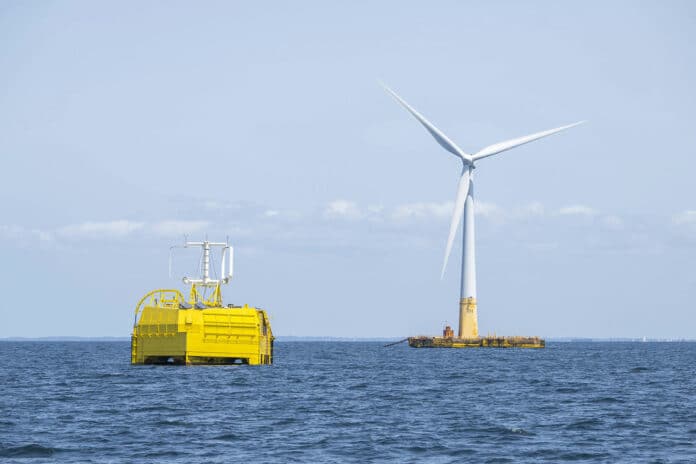Lhyfe, a renewable energy company, announced the return of Sealhyfe, the world’s first offshore hydrogen production pilot platform, to the Quai des Frégates in Saint-Nazaire. The announcement came after the company successfully achieved all objectives set during its groundbreaking launch in September 2022.
As soon as it was launched, the platform underwent sea trials first at the quay and then at sea at the SEM-REV offshore hub test site. The platform is attached to a WAVEGEM floating platform, which has been re-engineered to stabilize the production unit at sea. It was connected to Central Nantes’ SEM-REV offshore testing hub operated by the OPEN-C Foundation, which was already linked with a floating wind turbine, FLOATGEN, engineered and operated by BW Ideol.
The second testing phase at sea was focused on a strict comparison with the results initially observed at the quay and then on additional offshore-specific tests, including the reliability of offshore production of hydrogen in an isolated environment, management of the platform’s movement and environmental stresses, validation of green and renewable hydrogen production software and algorithms.
During this testing period at sea, the platform encountered a wide variety of weather situations and was able to carry out a series of tests, enabling millions of data to be gathered. The Sealhyfe platform, equipped with the 1 MW electrolyzer supplied by Plug, is capable of producing up to 400 kilograms of hydrogen a day.
The purpose of testing Sealhyfe under real offshore conditions was to prove the technical feasibility of such a project and acquire the operational experience needed to quickly scale up. This milestone has paved the way for accelerating large-scale offshore projects that are essential for decarbonizing industry and mobility.
As Sealhyfe returns to the dock, Lhyfe will now analyze the data in greater depth, with the main findings likely to be shared as early as January 2024. These results will significantly benefit all of Lhyfe’s current and future sites, onshore and offshore, and will notably be used as part of stage 2 of its development of hydrogen production offshore: the HOPE project.
In June, Lhyfe announced that the HOPE project had been selected by the European Commission under the European Clean Hydrogen Partnership and was being awarded a €20 million grant. The project involves nine partners and aims to reach commercial scale by 2026.
The HOPE project will use a 10 MW electrolyzer to produce up to four tonnes of green hydrogen per day at sea and transport it to the shore via pipeline, where it will be compressed and delivered to customers. The HOPE project will benefit from Sealhyfe, a new technology that enables offshore hydrogen production in harsh conditions.
Lhyfe has also partnered with several offshore wind developers and experts, such as EDPR, Centrica, and Capital Energy, as well as ambitious offshore projects, such as the Åland Energy Island project with CIP and Flexens, to develop an integrated large-scale renewable energy system based on offshore wind power, including the production of green hydrogen on Åland in Finland.
